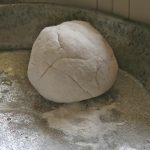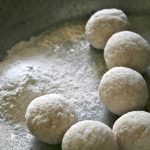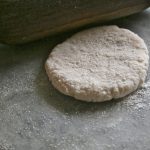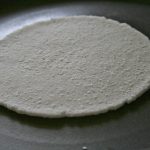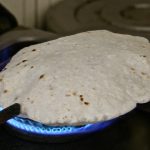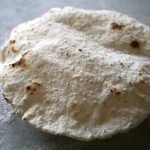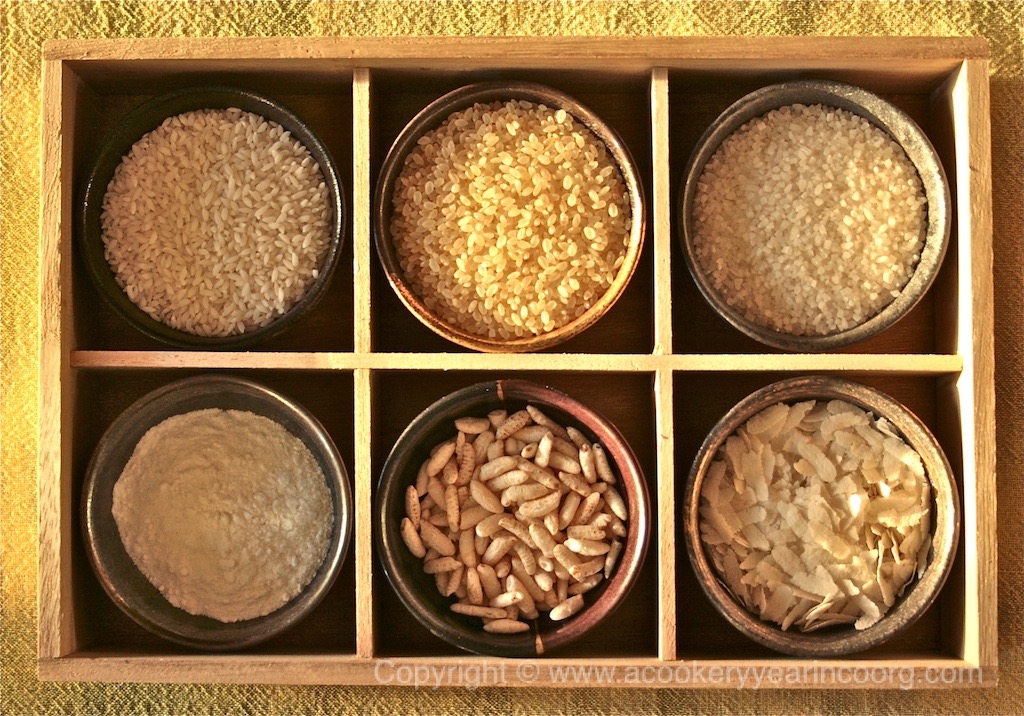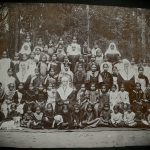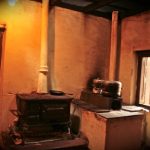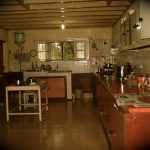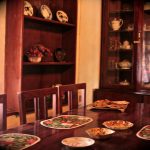Our daily flatbread
Akki otti, a rice flatbread, is a staple at breakfast. My grandmother made these the traditional way, patting out the dough in circular movements on a dampened piece of muslin placed on a round wooden rolling board. These days, there are food processors and roti presses that make short work of the process of kneading and pressing out. There is nothing more evocative of an early morning in a Coorg household than the smell of freshly made akki ottis being given a final quick roasting on glowing embers.
Akki Otti
- 3 cups soft, cooked rice (freshly cooked is best but leftover rice is fine too)
- 1 cup rice flour
- Salt to taste
- Rice flour for dusting

